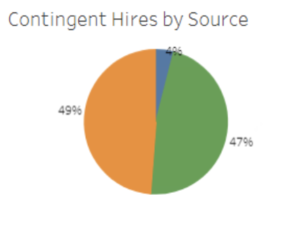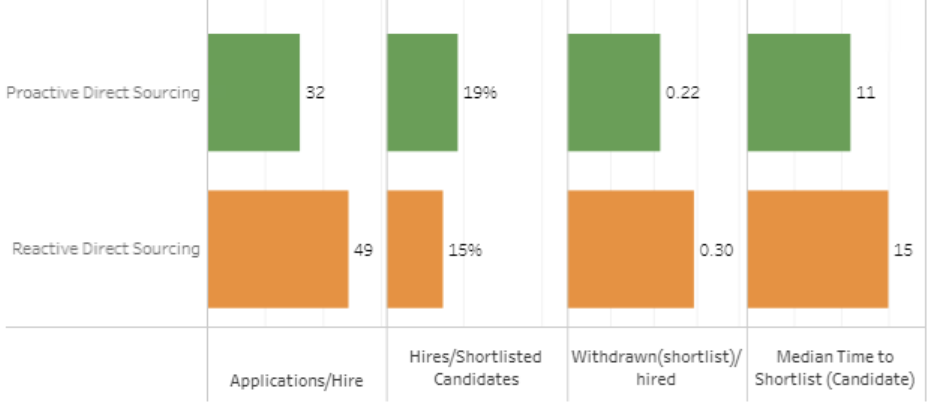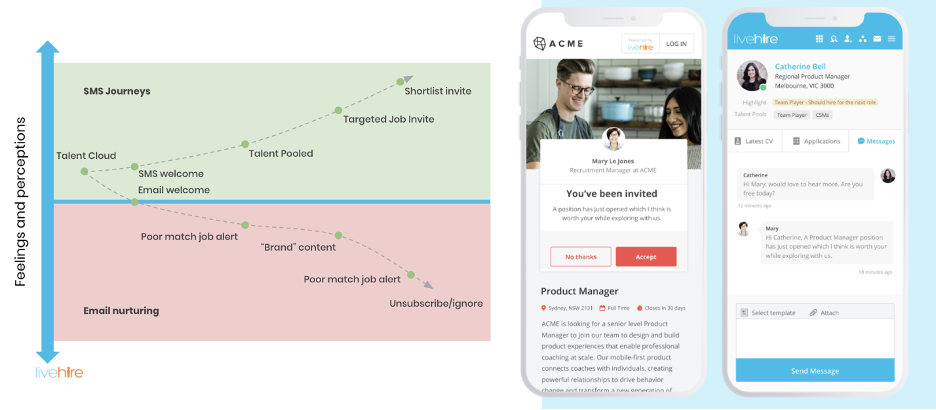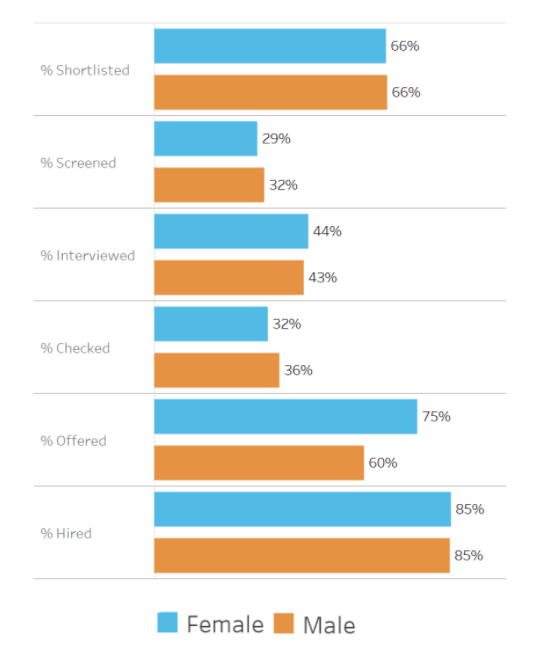One thing most discussions about Direct Sourcing are missing is hard data. In this article, Christy Forest, CEO of LiveHire, a leading global Direct Sourcing technology company, provides an introduction to the best practice of direct sourcing of contingent workforces for large enterprises. The article also sheds light on the benefits of outsourcing the management of a direct sourcing program to a staffing supplier. Forest’s article dives deep into a direct sourcing best practice analysis, drawing upon the last 15,000 contingent hires across 120 enterprise talent cloud installations in 14 of the 18 largest industries by total workforce volume.
@forest_christy, CEO of @Livehireme, breaks down the best practices for #DirectSourcing a #ContingentWorkforce in @TalentTechLabs latest Trends Report. Read more: Click To TweetCompany Spotlight on LiveHire
Direct sourcing leverages the employer brand as a talent magnet to systematically create a curated and responsive talent cloud of prospective candidates. Direct sourcing is the #1 trend in contingent workforce management today (Ardent Partners 2020; SIA 2021). Organizations are seeking further cost savings, quality-of-hire, and time-to-hire improvements in sourcing their contingent workforce.
Managed Direct Sourcing is outsourcing the enterprise’s entire Direct Sourcing program (advertising, sourcing, curation, hire, onboard, payroll) to a third-party provider, such as a preferred staffing supplier or MSP.
LiveHire is a leading global Direct Sourcing technology. Established in 2012, LiveHire enables employer-branded talent communities, AI-assisted Talent Pooling, 2-way SMS communication, end-to-end recruitment process management, reporting and analytics, data security, and 2-way integration with leading VMS.
Direct Sourcing Best Practice Analysis
This direct sourcing best practice analysis is drawn from the last 15,000 contingent hires across 120 enterprise talent cloud installations in 14 of the 18 largest industries by total workforce volumes. It combines both internally run and outsourced/managed direct sourcing programs using LiveHire technology as the underlying candidate experience, AI-assisted curation matching, SMS/text message communication, requisition fulfillment, and 3rd party software integration.
1. Best Practice: Direct Sourcing Scales
On average, clients’ Direct Sourcing programs (see chart below) achieve 96% direct sourcing success, with 4% of requisitions going out to traditional staffing supply channels.

Blue: agency
Green: Direct Source (curated/proactive)
Orange: Direct Source (advertised/reactive)
2. Best Practice: Direct Sourcing Focuses On “Curated” Talent
The source of hires through direct sourcing can be broadly categorized as:
- Advertised (Reactive); whereby the candidate is sourced through a job advertisement after the job vacancy is approved and opened, or
- Curated (Proactive); whereby the candidate has already been found, engaged, and curated into relevant role pipelines (talent pools) before the job vacancy being approved and opened.
In the analysis of the LiveHire client’s direct sourcing programs, 47% of all hires were proactively found “curated” candidates. The trend of this portion of directly sourced hires within each program increases with time, provided the technology and recruiter experience delivers a candidate satisfaction (net promoter) score in the “amazing” (>50) range, meaning candidates are happy to respond and apply for future roles.
3. Best Practice Curated Candidates Produce The Most Efficient Recruitment Outcomes At Scale
Candidates from “curated” sources, as compared to “advertised” sources, are much more efficient through each stage of the hiring funnel. Curated candidates:
- Require fewer applications to process per hire (35% reduction)
- Produce higher submittal to hire ratios (27% improvement)
- Result in fewer shortlisted candidates withdrawing per hire (27% reduction)
- Take less time to submit (27% reduction)
As a best practice, direct sourcing programs will more efficiently scale by focusing on curated talent pools over time.

These factors, at scale, will drive further cost savings, either by reducing the cost overhead of internal teams or by allowing the Managed Direct Sourcing partner to pass on the efficiency savings and lower their already reduced markup even further.
@forest_christy, CEO of @Livehireme, offers insights and analysis of best practices for #sourcing #ContingentWorkers in @TalentTechLabs latest Trends Report: Click To Tweet4. Best Practice SMS Journeys Improve Candidate Response To Future Jobs
SMS journeys involve sending a limited number of SMS (often automated) to the candidate in the “moments that matter.” SMS is the generally preferred communication method of candidates (82% opt-in) for job information vs. email or phone.
The SMS journey creates a personalized message thread that is a trust anchor, which ensures most candidates respond to shortlist invites in the future.

When implemented correctly and coupled with effective AI-assisted job matching, a choreographed SMS journey (as a replacement for email-based campaigns and nurturing) achieves high candidate responses to future jobs, fast response times, and high submittal to hire conversion rates.
5. Best Practice Candidate Experience Is Key To Sourcing For Gender Diversity
Analysis of all hires across male-dominated industries shows that the recruitment funnel is not the issue when seeking gender-diverse hires. If gender-diverse candidates are sourced, they progress through recruitment stages at roughly the same rate.

The three most significant frustrations of gender diverse candidates being sourced (Harvard source) are:
- Applications take too long
- Minimal human interaction to qualify the role
- Perceived risk of rejection
Organizations looking to optimize their candidate sourcing gender diversity should address these three frustrations through best practice technologies and processes.
6. Best Practice: Managed Direct Sourcing For Staffing Firms.
LiveHire’s analysis of 120+ direct sourcing talent clouds indicates that staffing firms (who can provide Managed Direct Sourcing solutions) may result in more effective and efficient recruitment funnel conversions than when a company’s in-house resources are deployed.
The average time-to-hire for internal talent acquisition teams recruiting permanent roles is 87 days (Source: Gartner: Time-to-fill benchmark 2020), while submittals for a contingent requisition is expected almost immediately. Internal teams’ reactive processes and systems may not allow for the proactive time needed to build talent pools for speed in contingent recruitment.
Ian Martin Case Study
Founded in 1957, the Ian Martin Group provides staffing, managed direct sourcing, and EOR/payroll services across several industries.
Ian Martin’s industry-first Managed Direct Sourcing solution was effectively deployed in the fight against COVID-19. Due to the speed and scalability of the Managed Direct Sourcing offering, Ian Martin was able to rapidly hire more than 900+ COVID-19 contact tracers and case managers in less than 120 days for the Ontario Government, and more than 700+ contract tracers and case managers for the Alberta Government in 90 days. With the success of this initial delivery, Ian Martin is subsequently providing Managed Direct Sourcing services for more than 500 customer service representatives to help support the Ontario Ministry of Health with their COVID-19 vaccine scheduling rollout.
Elise Belzil, Manager at the Ontario Ministry of Health, Rapid Response and Outbreak Management Coordination, agrees that direct sourcing offers incredible speed, responsiveness, and scale:
“Ian Martin is using Managed Direct Sourcing to provide reliable rapid-response support to help scale up the Ministry of Health’s Contact Tracing capacity. They have sourced, trained, and currently manage hundreds of Contact Tracers at Public Health units across the province. The team is proactive and available to respond to tight timelines, changing circumstances and are solution-orientated when challenges arise. Ian Martin has been an important part of the Ministry of Health’s success with this project.”
Implementing Direct Sourcing is the #1 priority of workforce procurement executives today as they are looking for significant improvements in diversity, quality-of-hire, speed, and cost savings within their programs. With best-practice technology and processes, direct sourcing can quickly scale to be the primary source of contingent hires.
Best practice technology and processes focus on improving candidate Net Promoter Score to drive diversity of hire while progressively increasing the “curated” source of hire for direct sourcing, reducing the reactive “advertising” source through the development of sustainable, responsive talent pools. Overall efficiency, scalability, and cost savings of a direct sourcing program are derived from a continuous improvement focus on application volumes per hire, time to submit, submittal to hire ratio, and candidate withdrawal to hire ratio.
Want to learn more? Check out our full Trends Report to hear from more industry leaders about the benefits of Direct Sourcing and the future of the talent acquisition industry.

